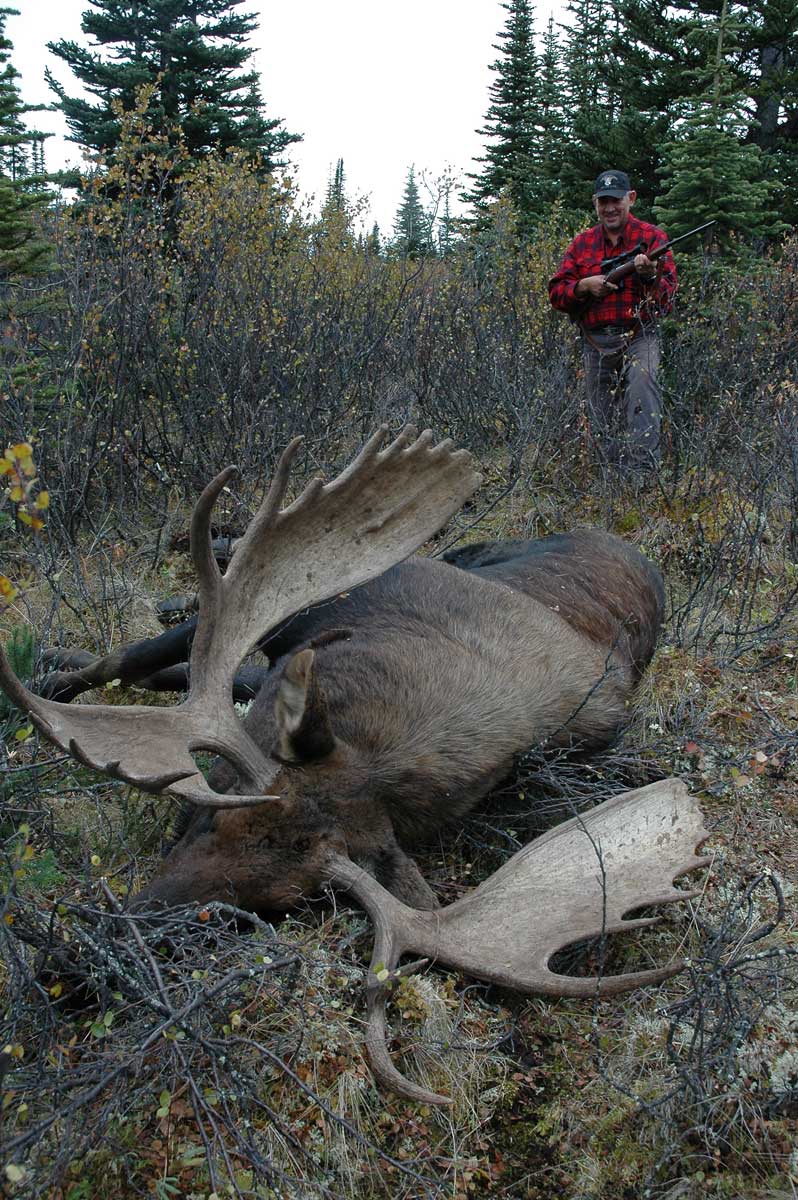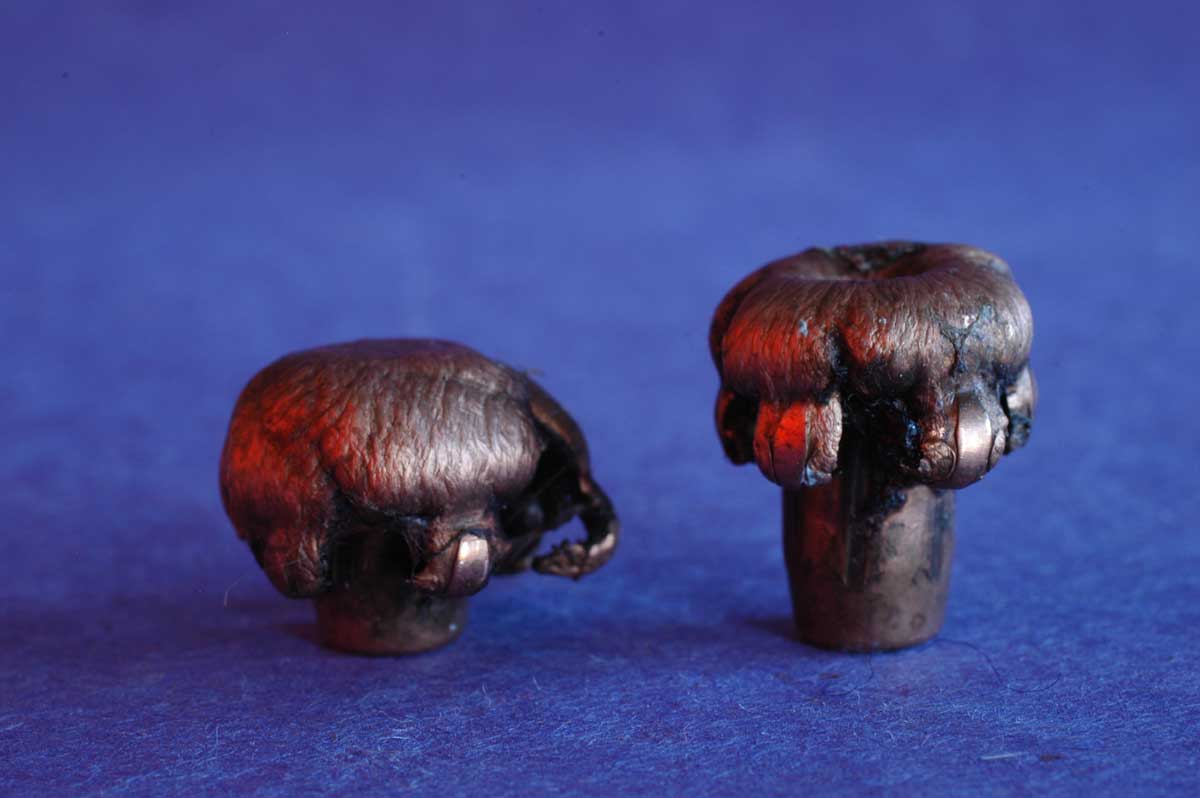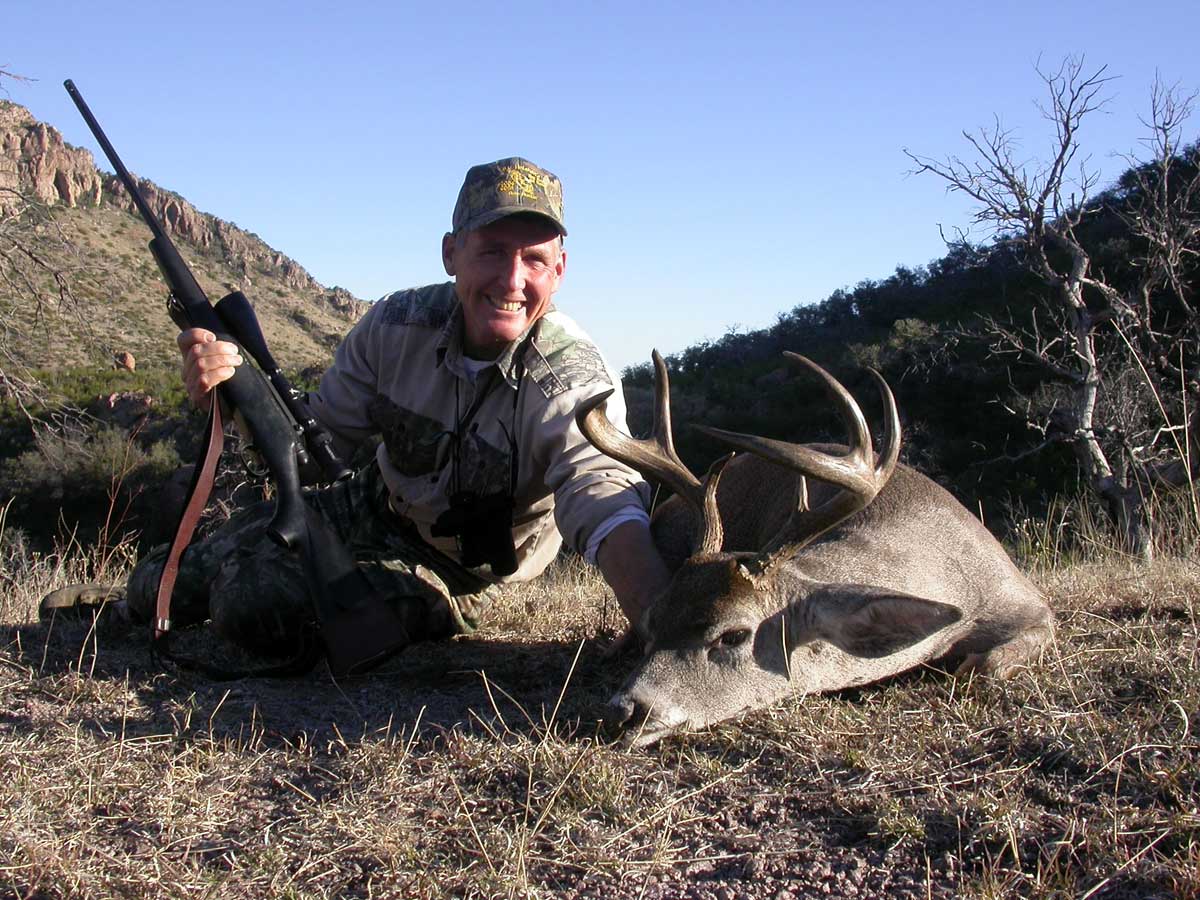What Are Your Bullets Doing In There?
Sleek form and shine don’t kill. Besides hitting where you aim, a bullet must do lethal damage!
The willows swallowed the ivory paddles we’d spied from the hill. I eased ahead slowly, crosswind, each twig-snap loud as a shot. Moose have good ears.
He stood just long enough, antlers a scalloped line across comb-tooth saplings. Rifle to cheek, I side-stepped to catch the slot to his ribs and sent a 250-grain Swift A-Frame. The crash of the 9.3 brought a rodeo of action. The ground shook when he fell.

For all the current attention given long shots and the obsession over third decimal places in ballistic coefficients, most big game drops within 200 yards of the rifle. The shape of a bullet when it leaves matters less than its shape when it comes to rest, and the wound channel in its wake.
Expanding bullets dump energy as they decelerate. A ruptured nose hikes resistance, deceleration rate and energy release as it carves a pear-shaped cavity. Peeled nose petals tear tissue. Hydraulic pressure spreads the damage. A wound caused by a bullet upsetting to double diameter is much bigger in volume and cross-sectional area than one from a bullet that doesn’t open.
The first jacketed softpoints were blunt with plenty of exposed lead up front so they’d open readily at modest impact speeds. But driven fast, they came apart. Charles Newton designed a spitzer (pointed bullet) with a wire nose insert to control expansion. Paper under the jacket kept barrel friction from melting the core.
Before World War II, the Western Tool and Copper Works made a hollowpoint bullet that drove deep in tough game even when sent from the powerful .30 Newton. DWM’s “strong-jacket” bullet had a long nose cavity lined with copper tubing and capped. A bronze peg in the nose of Remington’s Bronze Point initiated upset. Winchester’s Precision Point had a gilding metal nose cone that gripped the jacket. A cone also capped Peters’ Protected Point bullet, a “driving band” under its jacket managing upset. A Protected Point bullet took 51 operations and three hours to make! A less costly version, without driving band, emerged as Winchester’s Silvertip.
Beginning in the 1920s with the .270 Win. and .300 H&H, velocities ratcheted up. Core-jacket separation in game became a problem. Peters’ Inner-Belted, and its successor, Remington’s Core-Lokt, were claimed to stay intact.
In 1947, John Nosler fashioned a bullet with two cores after the German H-Mantle design. A dam of jacket material captured the heel. Later, Winchester listed its Partition Gold bullet under the Combined Technology banner marking collaboration between Winchester and Nosler. The jacket divider was moved forward to boost retained weight. A steel cup prevented heel deformation. Winchester had pioneered such a device in its Fail Safe bullet behind a hollow copper-alloy front. That cup prevented the lead heel core from ballooning the midsection and escaping through seams opened by curling petal tips.
In the 1980s, Jack Carter developed his Trophy Bonded bullet (now sold by Federal). Its thick, ductile jacket was joined chemically to a lead core. The Swift A-Frame married a bonded nose with the Partition’s split core. Swift’s Scirocco is bonded too. Ditto the Nosler AccuBond, Hornady InterBond, Norma Oryx and Remington Core-Lokt Ultra Bonded. Speer gave its Grand Slam (GS) bullet a two-part core — its rear harder than its front.
The GS’s tapered jacket was softer at the nose than at the base. RWS dual-core bullets were unique: The hard heel on the TIG (Torpedo Ideal) had a funnel mouth to accept the coned butt of the nose. TUG (Torpedo Universal) geometry was the reverse: a funnel on the nose section accepted the heel’s cone. Impact smashed both ends of the nose. A heel fold and swaged jacket ring gripped the rear core to ensure it drove on.
Unalloyed copper jackets helped Idaho’s Bitterroot Bullet Company establish a reputation among elk hunters. Soft jackets as thick as .060-inch in .338 bullets made hollowpoint Bitterroots long for their weight, but they resisted fragmenting on bone. The main liability of unalloyed copper was, and still is, bore fouling.
Some bullets grizzled by years are still produced and popular but have undergone overhauls, hence my use of past tense in their descriptions. Their purpose remains unchanged — to plow broad, deep channels in animals of various sizes from myriad shot angles across a range of impact speeds. A daunting design task!
Bullets for tough game are often labeled “controlled expansion.” Verily, all bullets made to open have a throttle on upset. The simplest softpoints hew to the dictates of core hardness and nose exposure, jacket composition, taper and thickness. None excel under all conditions. Still, bullets of every type begin to expand at about the same time — when they strike. That’s when force against the nose is greatest.
Randy Brooks told me he was glassing for brown bears when he concluded that bullet failures on tough animals all involved lead loss, “so I decided to make a lead-free bullet,” he said.
At his Utah shop, Brooks came up with an all-copper hollowpoint. “Next spring in Alaska I killed a brown bear with that hand-made bullet. I called it the X-Bullet because the nose peeled into four petals to form an X,” he recalls. In 1989, Brooks and his wife, Coni, bet their business on that design. “On safari in 1992,” he said, “Coni used her .338 Winchester with 225-grain X-Bullets to kill 62 animals, 61 with the first shot!”
As expected, copper X-Bullets fouled bores more quickly and stubbornly than did gilding metal (copper/zinc) jackets of lead-core bullets. Coatings proved an imperfect solution. Then Brooks machined three grooves in the shank to reduce friction and give rifling lands “a place to push the displaced copper.” The result: less fouling, lower pressures and better accuracy! In 2003, this new bullet became the TSX or Triple Shock. The Tipped TSX followed.
Hornady fielded the lead-free GMX (for “gilding metal expanding”) bullet early in 2009. Jeremy Millard, who headed the project, says, “the GMX is 95 percent copper, 5 percent zinc, same alloy we use for bullet jackets.” Cut from wire and swaged, GMX bullets cost about 40 percent more than lead bullets to make, given current prices of copper and lead.

The GMX looks and flies like Hornady’s SST, but twin shank cannelures gulp displaced metal and keep pressures in check. The GMX nose also differs from the SST’s. A parallel-sided cavity up front tapers to a point even with the base of the ogive. Expansion stops there. While GMX bullets can’t match lead-bullet sectional densities, Millard tells me, “We get 99 percent weight retention in ballistic gelatin.”
My first chance at game with GMX bullets came in British Columbia after I spied the antler of a young moose quartering on at 105 yards. Prone, I sent a 150-grain GMX from my Ruger 77 in .300 RCM. The bullet crashed through the near scapula and scrambled the lungs. The bull dropped on the spot.
The next logical step at Hornady was to marry the GMX shank with the soft polymer tip of FTX bullets in LeverEvolution ammo. The MonoFlex (MFX) arrived in 2011 with cut, not rolled, cannelures. The .30-caliber MFX for the .308 Marlin Express weighs 140 grains, 20 grains less than its lead-core counterpart. The nose cavity differs too. “Lead grips soft polymer stems tightly,” an engineer told me. “Copper allows soft tips to slip. The long MFX stem bottoms in a deep cavity that helps ensure full upset.” He added that copper is harder than lead, gilding metal harder still. “You can’t push lead-free bullets as fast as jacketed without hiking pressures; 140-grain MFX bullets leave the gate like 160-grain FTXs. Reconciling seating depth with case capacity and magazine length can also pose a challenge.”
A hunting bullet that expands as you wish no matter the game or the conditions is elusive enough without demands for sub-minute accuracy and flat flight. Sleek, heavy boat-tails that smack steel plates at distance have limitations for hunting. Engineers who develop match bullets tell me their nose cavities don’t reliably initiate upset.
I’ve shot only a few animals with such bullets. They killed; but such results can be misleading. Long-range bullets are usually sent at full throttle. While some game falls far from the rifle, most is taken where the missile is still traveling fast enough to open small-cavity noses. If the front comes apart, the heavy shank alone proves lethal. Also, loads now considered just right for the task would have been thought absurdly powerful short years ago.
The top typical whitetail of a century dropped to a .25-20 Win., the biggest elk of that time to a .30-40 Krag. Popular loads now unleash far more energy – enough to kill on occasion even if the bullet performs poorly.
Impact velocity matters. Most game bullets will upset when striking an animal at 1,600 fps. That threshold is easy to reach with modern cartridges to 500 yards, but by 800 many drop below it, so bullet-makers are seeking broader sure-upset windows.
Swift’s sleek Scirocco expands to 1,440 fps, insists CEO Bill Hober. Federal engineer Jared Kutney says TLR Edge bullets from a .30-’06 open to 900 yards! Both these bullets are bonded to ensure penetration with high-speed hits up close. Jeremy Millard at Hornady says the GMX excels on game at speeds above 2,000 fps, and in gelatin trials “loses only the poly tip” at impact velocities as high as 3,400 fps. “It’s hard to make copper expand at less than 2,000 fps unless the cavity is so big it compromises ballistic coefficient and the nose disintegrates at 3,000,” he says. The slim noses of lead-free bullets smaller than 6.5mm make expansion even harder to regulate.
“The nose has less effect on accuracy than the base,” said ballistician Alan Corzine years ago. To see how much less, I cut the front third off several .338 bullets. The resulting slugs varied in weight, and their shanks were crushed out of round by the cutter jaws. Still, stuffed atop handloads, these misshapen missiles gave me 3-inch groups at 100 yards!
Accuracy is essentially a measure of uniformity in your rifle, ammunition and shooting technique. Sierra’s Rich Maccholz elaborates, saying, “MatchKings shoot tiny groups because we take care with jackets. We allow 0.0003-inch thickness variation at the bullet base, 0.0010-inch up front. Tolerances for Pro-Hunter flat-base and GameKing boat-tail bullets are almost as tight: 0.0005-inch at the base, 0.0015-inch at the nose. Weight tolerances for match and hunting bullets are the same: 0.3 grains. Maximum tip run-out is identical too: 0.0001-inch.
Such precision is now expected by shooters who demand extreme-range hits from hunting bullets. It has delivered the likes of Nosler’s AccuBond Long Range and Berger’s VLD and Elite Hunter bullets. Polymer tips on some make them look fast; but the ogive most heavily influences trajectory.
Harder polymer tips are making their debut at distance. Hornady pioneered them with its Doppler radar, tracking bullets in flight. It showed ballistic coefficients can change en route. Jayden Quinlan says, “Friction from sustained speeds near Mach 3 brings tip temperatures to over 800 degrees. The tip melts, causing turbulence that increases drag. Result: steeper arcs, diminished accuracy.” Hornady’s response? The ELD-X bullet. Its Heat Shield Tip has a melt threshold of 700 degrees, twice as high as that of Delrin and nylon. It offers no practical advantage on bullets with BCs under .550, or bullets too slow or spending too little time aloft to get hot. But ELD-X bullets and Federal’s similar TLR Edge perform well in game over a wide velocity range.
Years ago, I packed into an Idaho elk camp with a rifle that didn’t like the expensive bullets I had handloaded for the trip. I defaulted to Winchester’s Power-Point, an ordinary softnose. My chance came at a bull quartering off at roughly 100 yards. I sent a bullet into the middle ribs as the elk reached timber. We found it dead 40 yards on. The Power-Point had lanced both lungs. It lay balled up in the far shoulder.

Such results remind me that ordinary softpoints are still deadly, that bullet placement still trumps bullet design in downing game. I’ve been convinced by riflemen taking game at great distance that bullet profiles once limited to long-range competition now offer lethal upset across broad velocity windows.
My field time with Barnes TSX and Hornady GMX bullets hasn’t changed my traditional bent to lead-core designs – but it’s compelling proof the lead-free option is just as deadly. As my hunting predates many current bullets, I’ve probably shot more tough game with Nosler Partitions than with any other.
Nose break-up during penetration doesn’t alarm me; those shards mince the vitals and the heel always drives on. If anything, the Swift A-Frame is better, with its bonded nose. Like Trophy Bonded bullets, another favorite, A-Frames routinely deliver 92 percent weight retention and double-diameter upset. Ditto the Norma Oryx, so tough that when its sides are removed so only the center third remains, that slab can be twisted 90 degrees without core-jacket separation!
Like Partition, A-Frame and Trophy Bonded bullets, the Oryx lacks a colorful polymer tip. But from a .30-’06 sporter it once gave me a 2-inch zero-check group at 300 yards. Soon thereafter I found myself just that far from a bull elk, his herd scattered about the basin between us. A 250-grain Oryx from my .358 Norma pulped both lungs. He dropped instantly. Swift’s A-Frame and Federal’s Trophy bonded have felled game as tough as mountain goats and as big as Cape buffalo with equal finality.
For me 300 yards is still a long shot, 400 my self-imposed limit. You’ve many choices in factory-loaded bullets that reach a quarter-mile with the speed to ensure upset, bullets that shoot tighter than you can hold and penetrate boiler-plate bone – for when the animal you’re after stands there just long enough.–Wayne Van Zwoll


